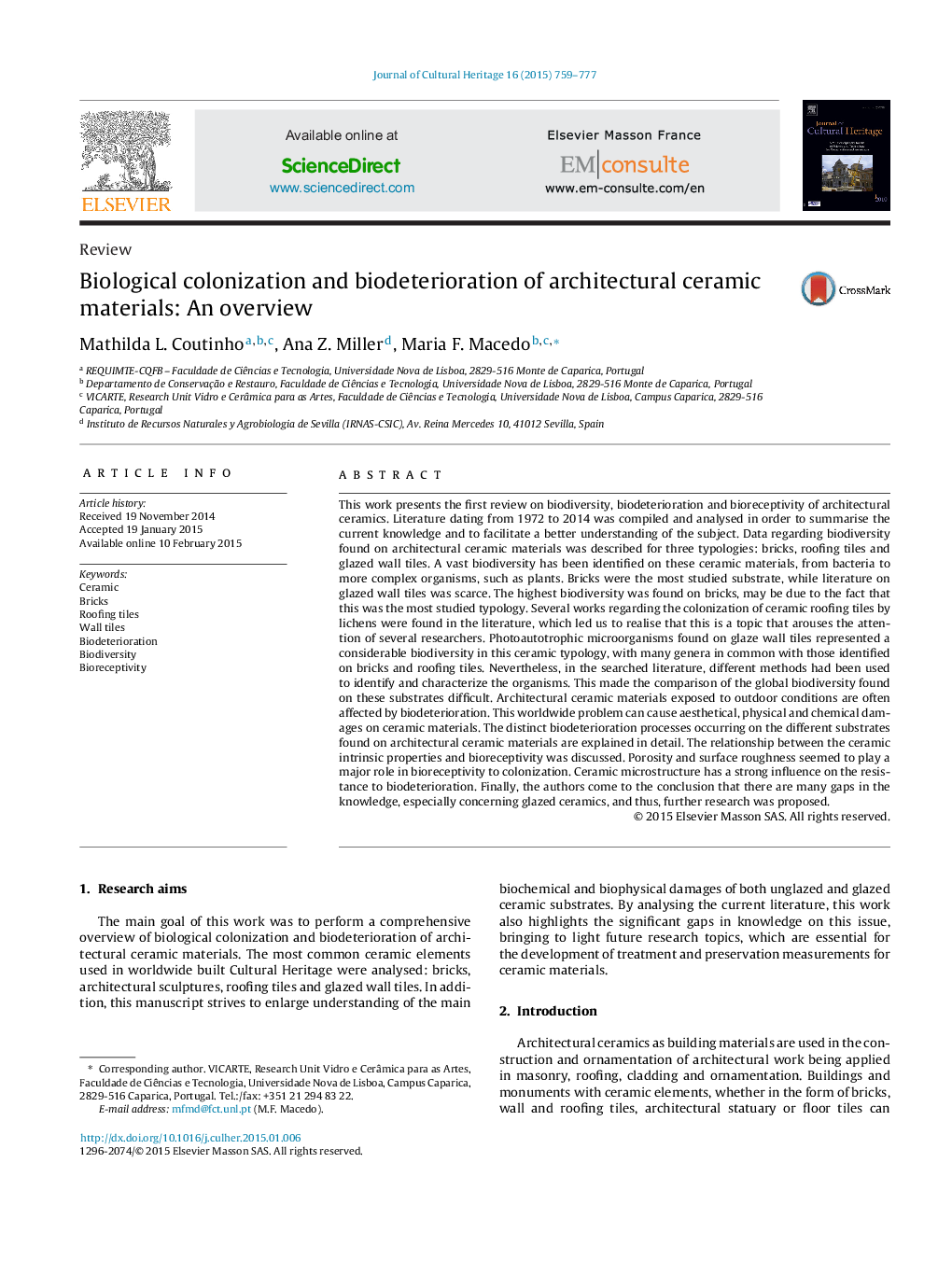| کد مقاله | کد نشریه | سال انتشار | مقاله انگلیسی | نسخه تمام متن |
|---|---|---|---|---|
| 1037933 | 944192 | 2015 | 19 صفحه PDF | دانلود رایگان |
This work presents the first review on biodiversity, biodeterioration and bioreceptivity of architectural ceramics. Literature dating from 1972 to 2014 was compiled and analysed in order to summarise the current knowledge and to facilitate a better understanding of the subject. Data regarding biodiversity found on architectural ceramic materials was described for three typologies: bricks, roofing tiles and glazed wall tiles. A vast biodiversity has been identified on these ceramic materials, from bacteria to more complex organisms, such as plants. Bricks were the most studied substrate, while literature on glazed wall tiles was scarce. The highest biodiversity was found on bricks, may be due to the fact that this was the most studied typology. Several works regarding the colonization of ceramic roofing tiles by lichens were found in the literature, which led us to realise that this is a topic that arouses the attention of several researchers. Photoautotrophic microorganisms found on glaze wall tiles represented a considerable biodiversity in this ceramic typology, with many genera in common with those identified on bricks and roofing tiles. Nevertheless, in the searched literature, different methods had been used to identify and characterize the organisms. This made the comparison of the global biodiversity found on these substrates difficult. Architectural ceramic materials exposed to outdoor conditions are often affected by biodeterioration. This worldwide problem can cause aesthetical, physical and chemical damages on ceramic materials. The distinct biodeterioration processes occurring on the different substrates found on architectural ceramic materials are explained in detail. The relationship between the ceramic intrinsic properties and bioreceptivity was discussed. Porosity and surface roughness seemed to play a major role in bioreceptivity to colonization. Ceramic microstructure has a strong influence on the resistance to biodeterioration. Finally, the authors come to the conclusion that there are many gaps in the knowledge, especially concerning glazed ceramics, and thus, further research was proposed.
Journal: Journal of Cultural Heritage - Volume 16, Issue 5, September–October 2015, Pages 759–777
